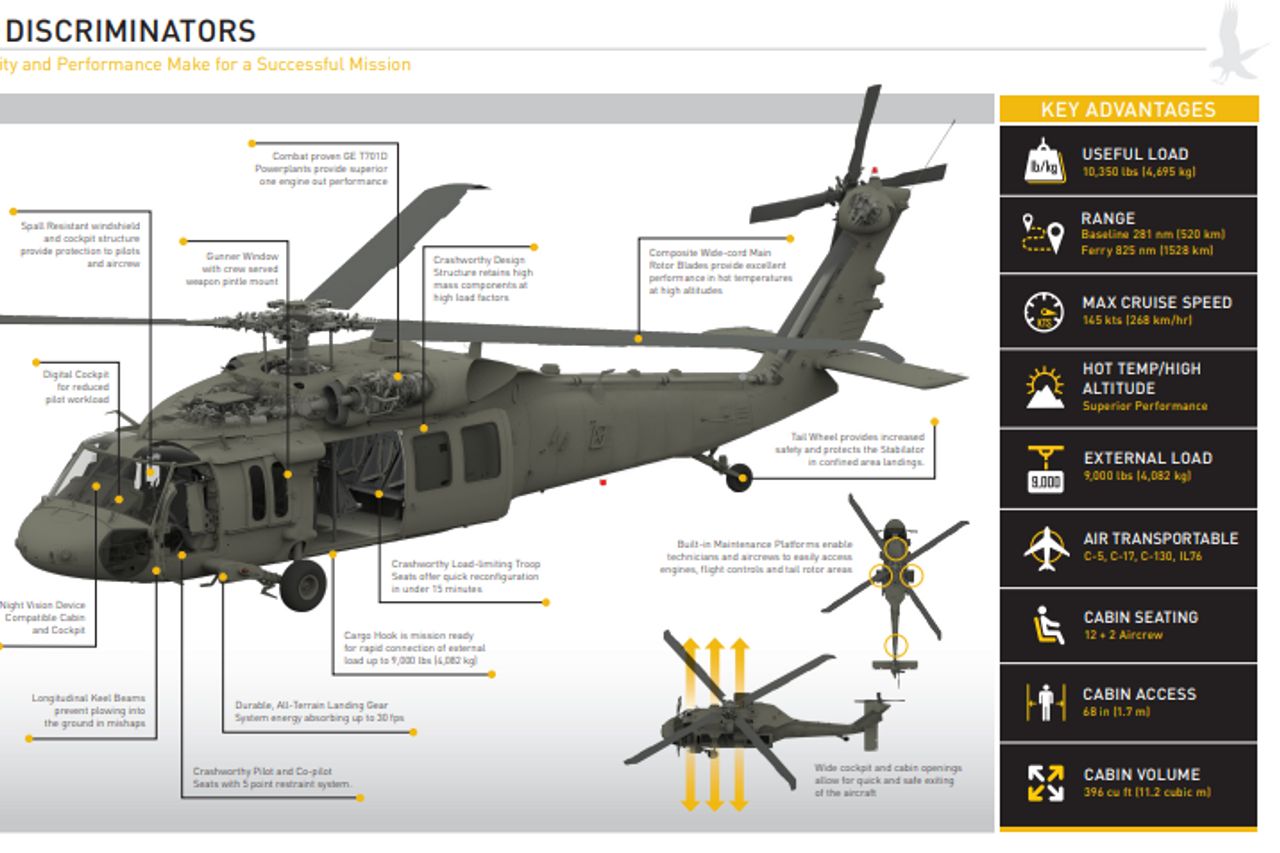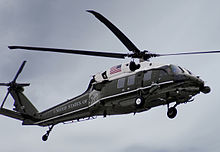A Take a look at the Sikorsky S 70's Function in Army and Civil Aviation
A Take a look at the Sikorsky S 70's Function in Army and Civil Aviation
Blog Article
High-Performance Multi-Role Rotorcraft Featuring Advanced Cockpit Technologies and Integrated Sensing Unit Systems
The world of rotorcraft technology has seen noteworthy advancements in recent times, particularly in the realm of high-performance multi-role rotorcraft furnished with sophisticated cabin technologies and flawlessly incorporated sensing unit systems. In the complying with conversation, we will explore the development of rotorcraft technology, delve into the realm of sophisticated cockpit developments, and take a look at the implications of incorporated sensor systems on the functional adaptability and efficiency of modern rotorcraft.
Development of Rotorcraft Technology
The evolution of rotorcraft technology has been marked by significant advancements in aerodynamics, materials, and propulsion systems, forming the abilities and performance of modern-day rotorcraft. Aerodynamic enhancements have actually improved the efficiency and ability to move of rotorcraft, enabling boosted rate, agility, and stability during flight (sikorsky s 70). Advancements in materials, such as using composite products and progressed alloys, have caused lighter yet more powerful rotorcraft frameworks, improving total efficiency and resilience. In addition, improvements in propulsion systems, including extra powerful engines and cutting-edge propulsion innovations, have allowed rotorcraft to achieve greater elevations, faster speeds, and better payloads.
These advancements have not only changed the capabilities of rotorcraft however have additionally expanded their applications across numerous industries, consisting of military, business, and emergency situation solutions. The continuous evolution of rotorcraft modern technology remains to drive development in the area, pushing the limits of what is feasible and forming the future of vertical flight.
Advanced Cabin Innovations
Structure upon the foundational improvements in aerodynamics, products, and propulsion systems, the realm of rotorcraft innovation currently shifts focus in the direction of introducing Advanced Cockpit Innovations. The assimilation of cutting-edge technologies within the cockpit setting plays a vital duty in boosting the functional capacities, safety and security, and effectiveness of contemporary rotorcraft. sikorsky s 70. Advanced Cockpit Innovations incorporate a large range of attributes created to provide pilots with boosted situational awareness, streamlined information management, and intuitive control user interfaces
Among the key advancements in cabin design is the application of glass cockpits, which change standard analog assesses with high-resolution screens. These digital systems offer personalized designs, real-time data assimilation, and boosted readability, making it possible for pilots to accessibility vital info at a glance. Progressed avionics systems, such as fly-by-wire controls and enhanced truth screens, are changing just how pilots communicate with the aircraft, allowing for exact control and boosted decision-making abilities.


Incorporating advanced cabin innovations not just boosts pilot efficiency however likewise contributes to overall objective performance and safety in intricate functional environments. By leveraging cutting edge technologies within the cabin, rotorcraft makers are setting brand-new standards for operational quality and mission success.
Integrated Sensor Equipments
With the development of rotorcraft modern technology, the assimilation of advanced Integrated Sensing unit Systems has actually come to be vital in improving operational efficiency and safety and security. These Integrated Sensing unit Systems include a vast range of modern technologies that give vital information for various features such as navigating, security, targeting, and environmental tracking. view website By seamlessly integrating sensing units like radars, cameras, lidar, and infrared systems right into rotorcraft, operators can take advantage of improved situational awareness, boosted mission capacities, and reduced pilot work.
One secret advantage of Integrated Sensor Solutions is their ability like this to gather real-time information and offer workable insights to pilots and mission drivers. For instance, progressed radar systems can identify and track targets over fars away, permitting for early risk detection and efficient reaction preparation. Furthermore, incorporating infrared and electro-optical video cameras allows rotorcraft to carry out reconnaissance and security goals with accuracy and precision.
Fundamentally, the integration of cutting-edge sensor technologies right into rotorcraft not only enhances operational effectiveness yet also contributes significantly to overall mission success and team security. As rotorcraft remain to progress, the function of Integrated Sensor Equipment will definitely continue to be at the center of innovation in the aerospace industry.
Functional Adaptability and Effectiveness
Enhancing operational convenience and efficiency in rotorcraft is an all-natural progression from the combination of sophisticated Integrated Sensing unit Solutions. By leveraging the data and insights provided by these sophisticated sensing unit systems, rotorcraft can optimize their efficiency across various missions and settings.
Operational adaptability incorporates the ability of rotorcraft to adapt to different roles and circumstances successfully. With advanced cabin technologies and incorporated sensor systems, rotorcraft can effortlessly change in between tasks such as search and rescue, medical emptying, monitoring, and extra. This convenience boosts the rotorcraft's capability to fulfill diverse functional needs without calling for extensive reconfiguration.
Performance in rotorcraft operations is critical for maximizing objective effectiveness and source utilization. Integrated sensing unit systems play a crucial function in improving functional effectiveness by supplying real-time data on climate condition, terrain mapping, target monitoring, and a lot more. This data allows pilots to make informed choices quickly, optimize pop over to these guys trip courses, conserve gas, and boost general objective productivity.
Impact on Modern Aeronautics Operations

Furthermore, the assimilation of advanced sensing units promotes enhanced goal preparation and execution, making it possible for rotorcraft to do a large range of jobs with boosted precision. From search and rescue operations to airborne firefighting and police goals, the capabilities of contemporary rotorcraft outfitted with sophisticated cockpit technologies and incorporated sensor systems are unmatched.
In addition, the impact of these improvements expands beyond operational performance to cost-effectiveness and sustainability. By maximizing flight routes, fuel intake, and maintenance routines, high-performance rotorcraft equipped with sophisticated cabin technologies and sensing units add to minimizing operational prices and ecological influence, making them vital properties in modern air travel operations.
Final Thought
In conclusion, the high-performance multi-role rotorcraft with advanced cockpit modern technologies and incorporated sensing unit systems represents a significant advancement in aviation innovation. These innovations boost functional convenience and performance, inevitably impacting modern-day aviation operations in a favorable way. The integration of these innovative technologies permits improved abilities and efficiency in different objective situations, showcasing the proceeded advancement of rotorcraft modern technology in the aeronautics sector.
The realm of rotorcraft modern technology has seen remarkable improvements in current times, specifically in the realm of high-performance multi-role rotorcraft furnished with sophisticated cabin modern technologies and effortlessly incorporated sensor systems. From improved objective convenience to boosted operational performance, the convergence of innovative cockpit innovations and integrated sensing unit systems has actually ushered in a new era of opportunities for rotorcraft applications. In the adhering to conversation, we will certainly explore the advancement of rotorcraft modern technology, delve right into the realm of advanced cockpit advancements, and analyze the ramifications of integrated sensor systems on the functional convenience and efficiency of modern rotorcraft.

Report this page